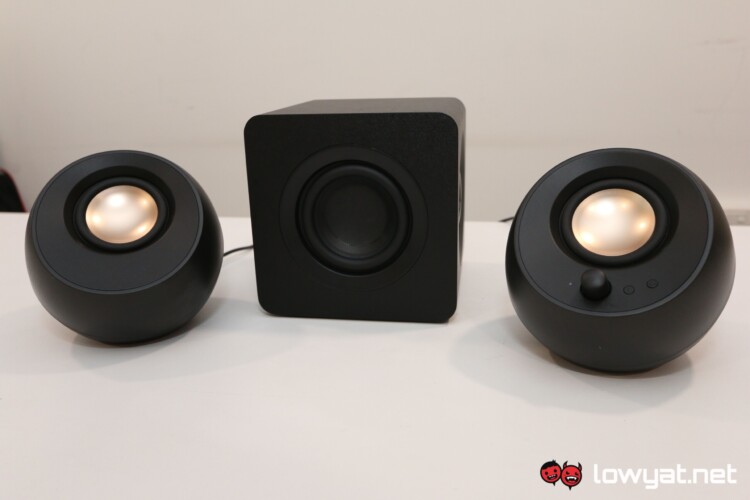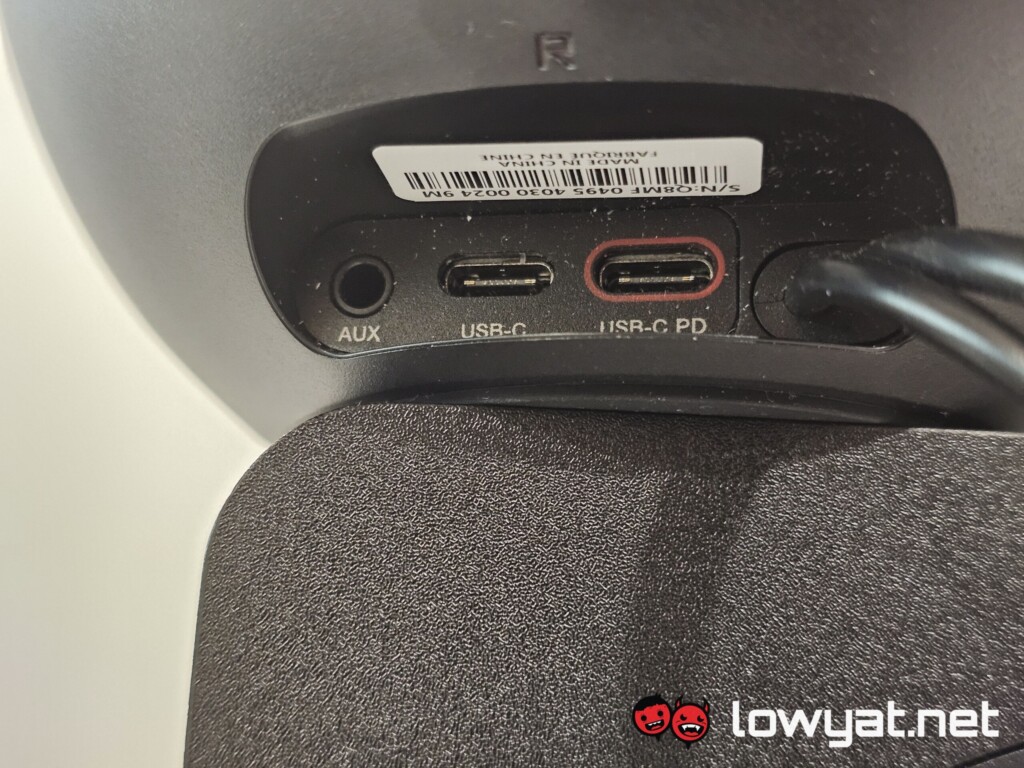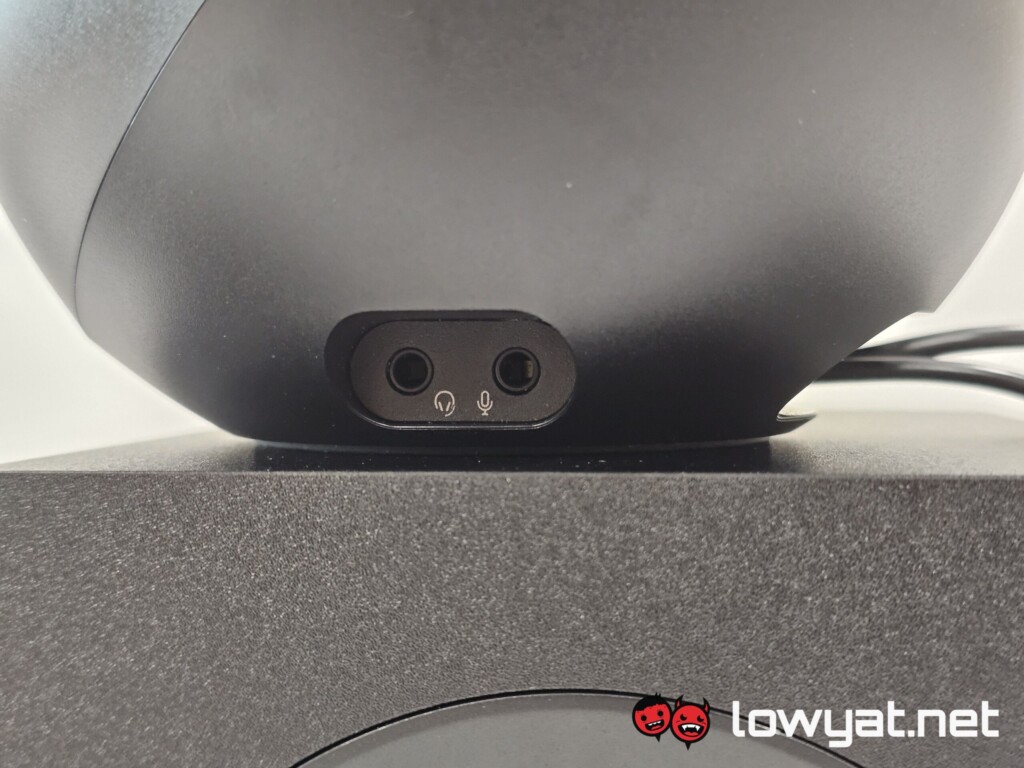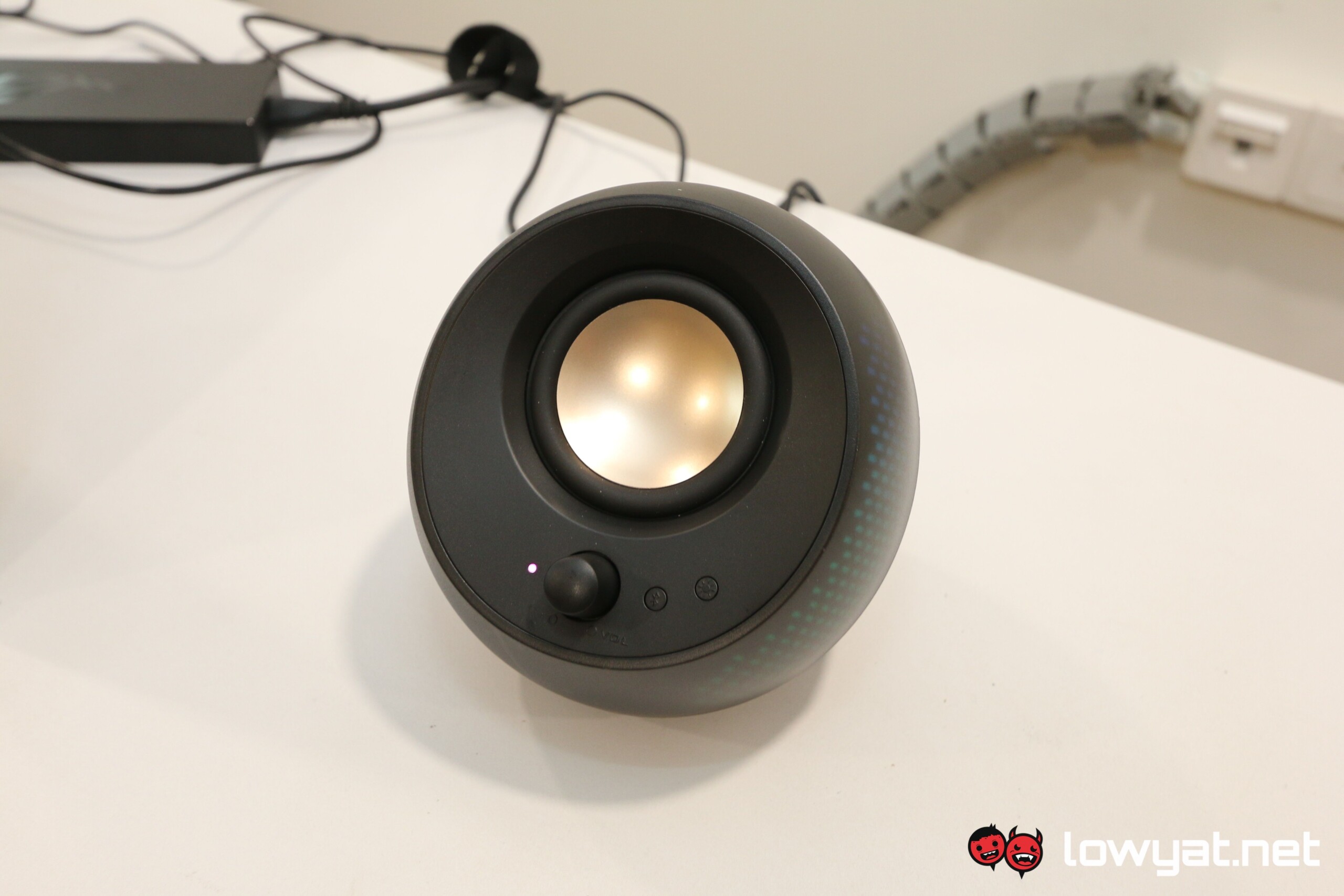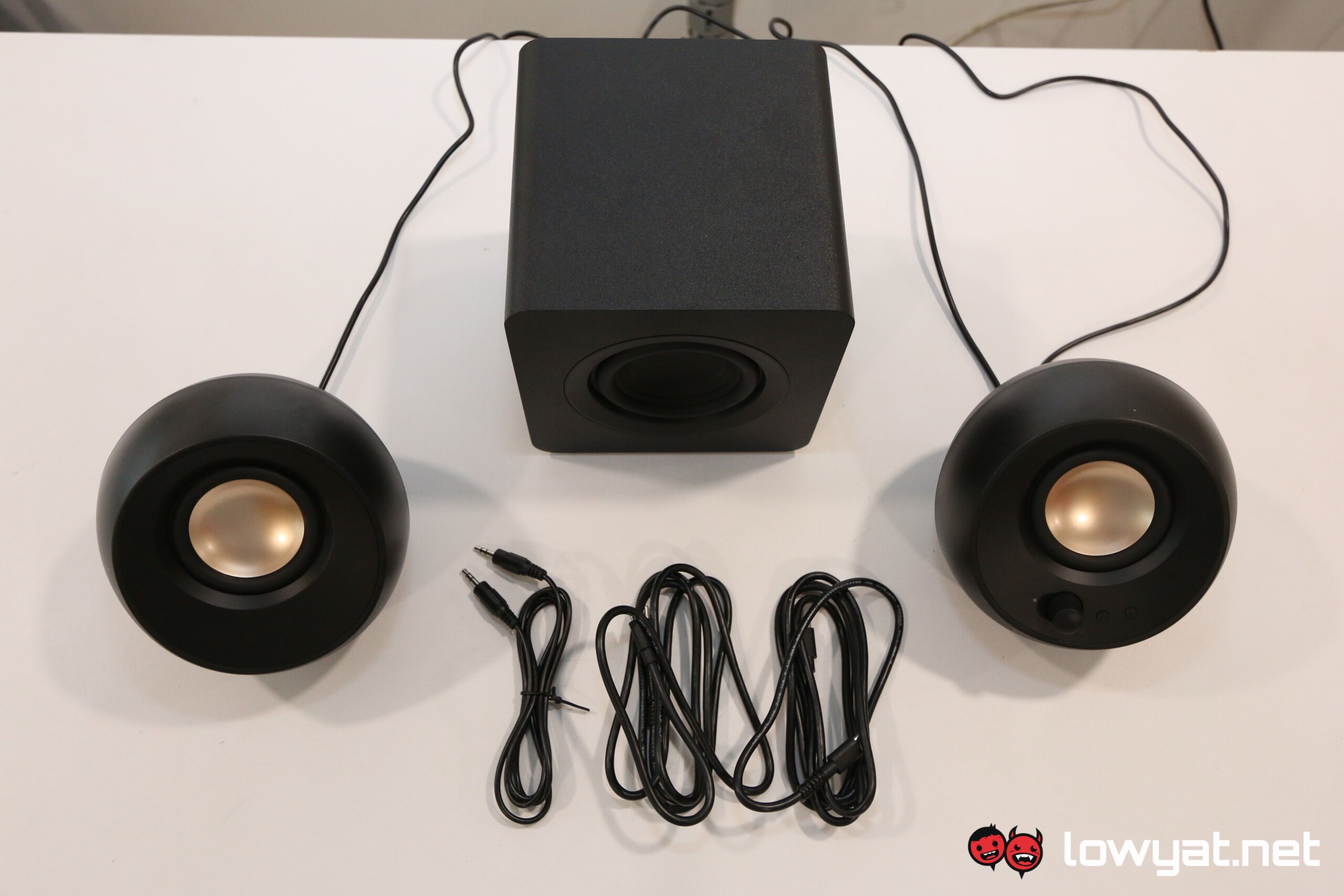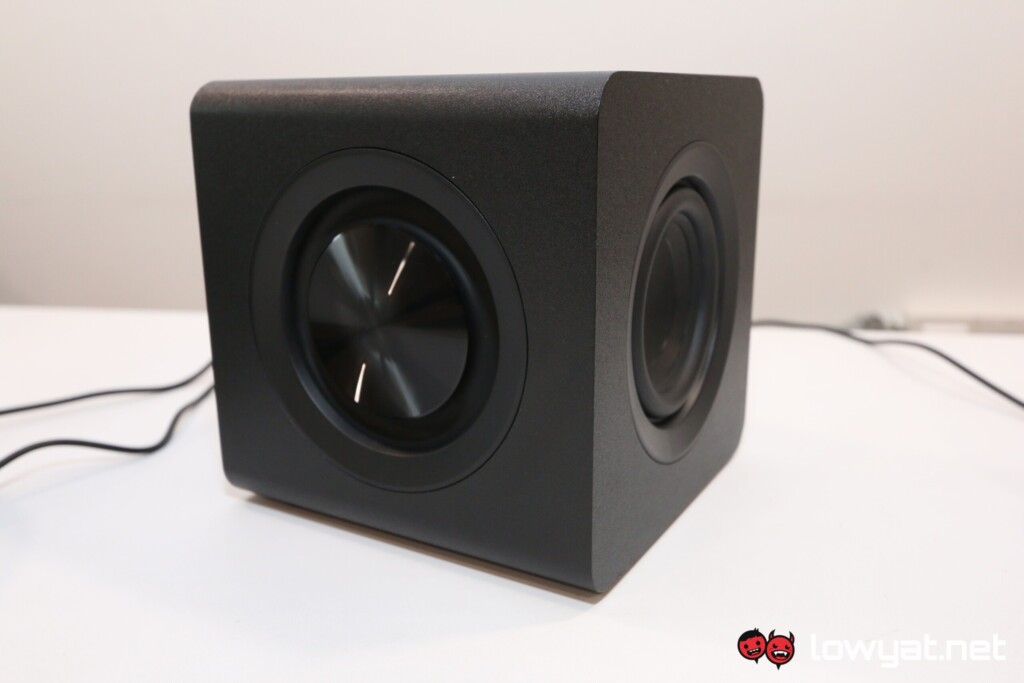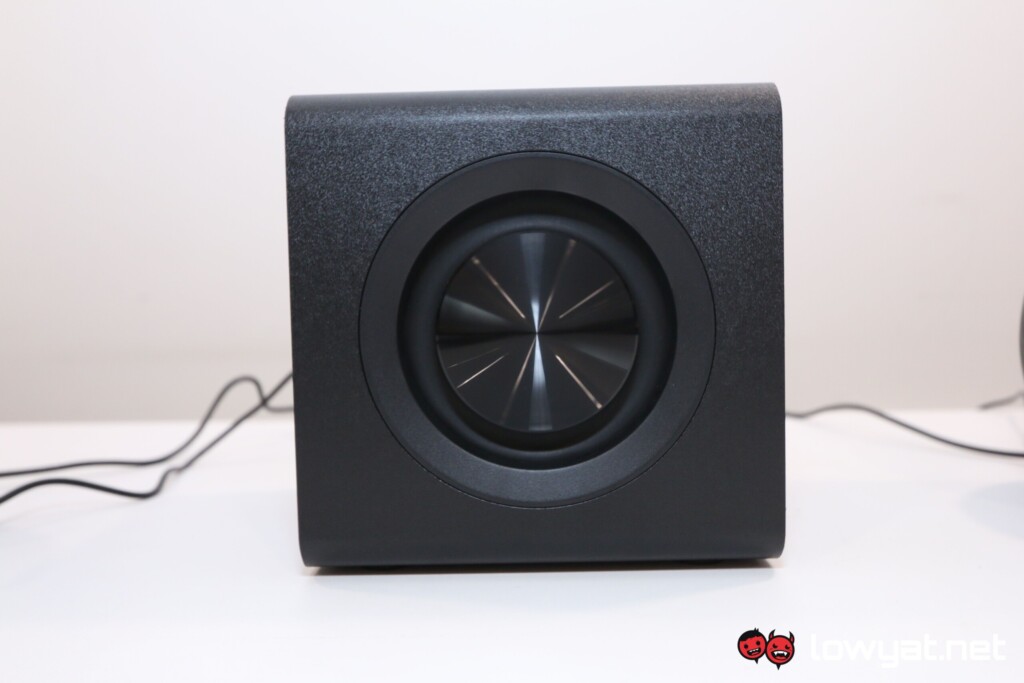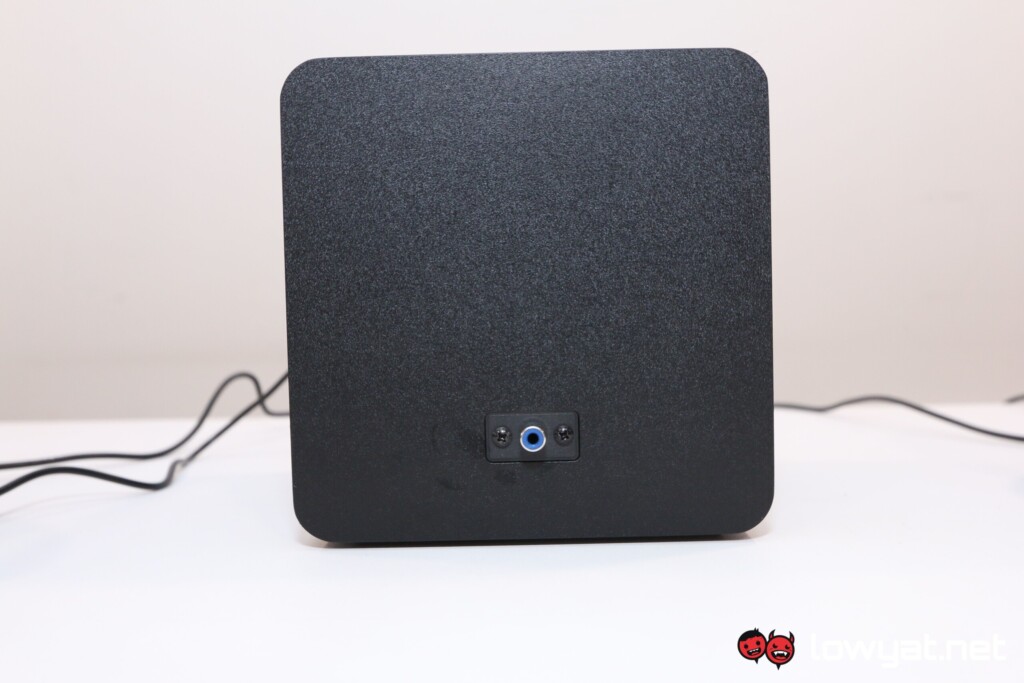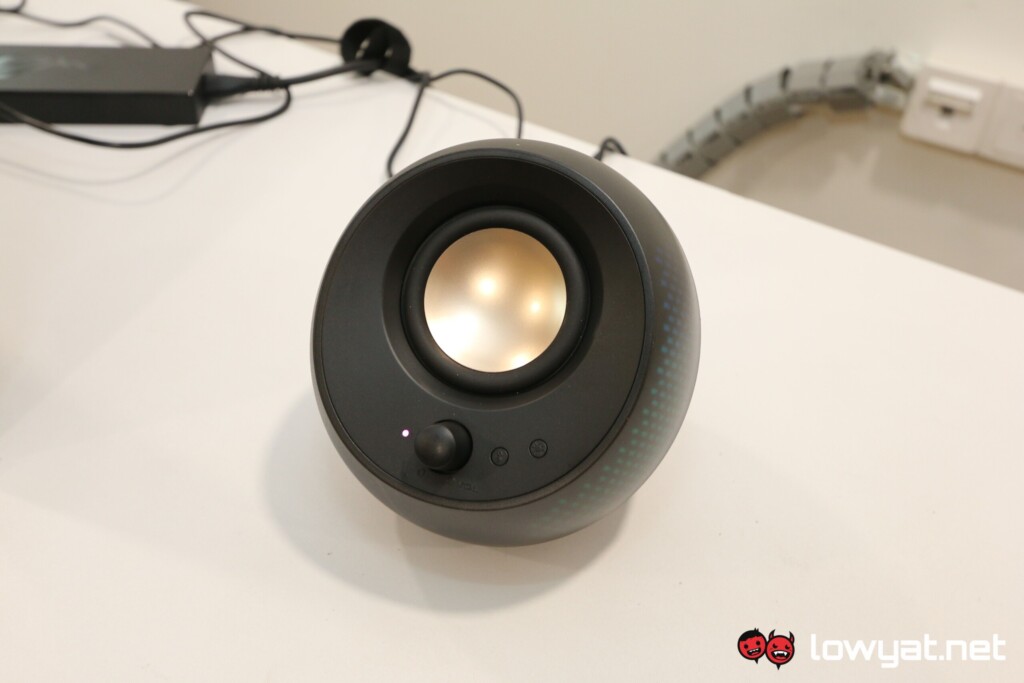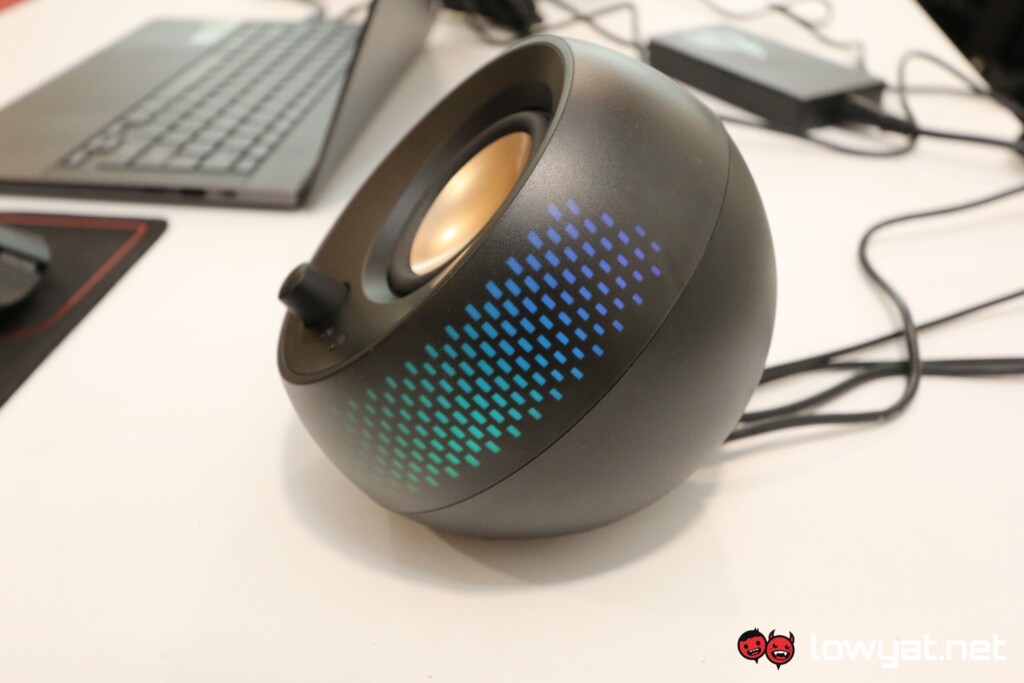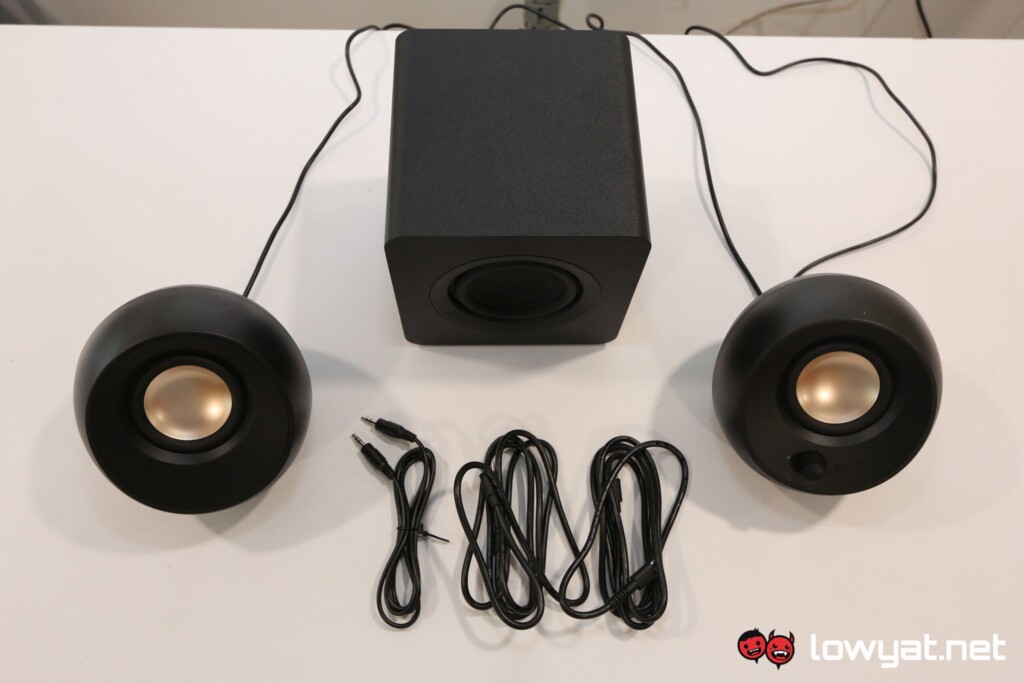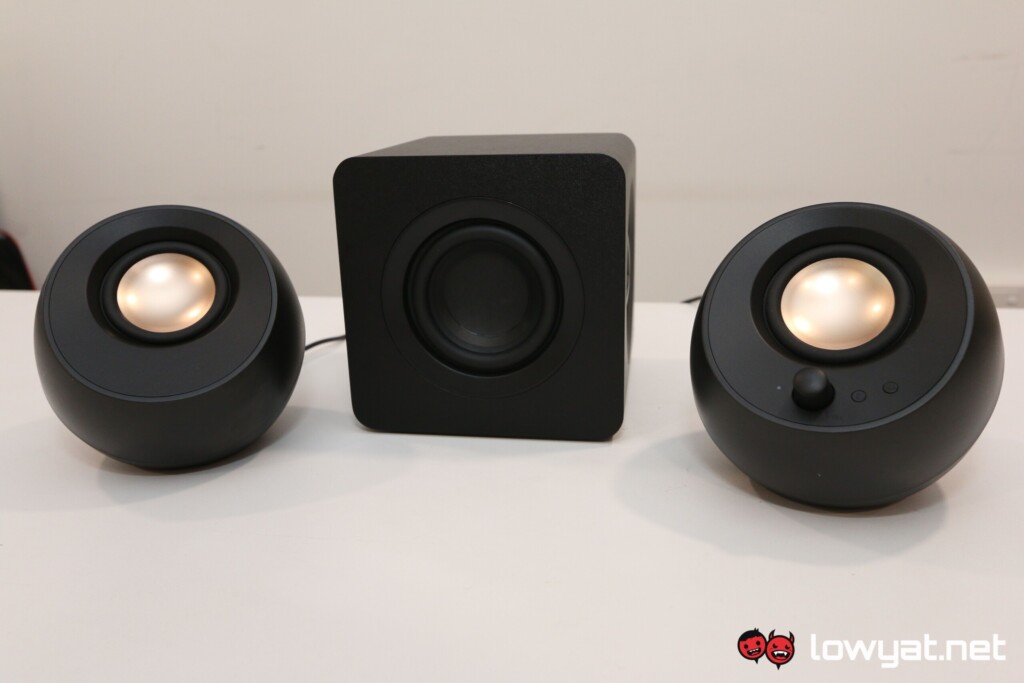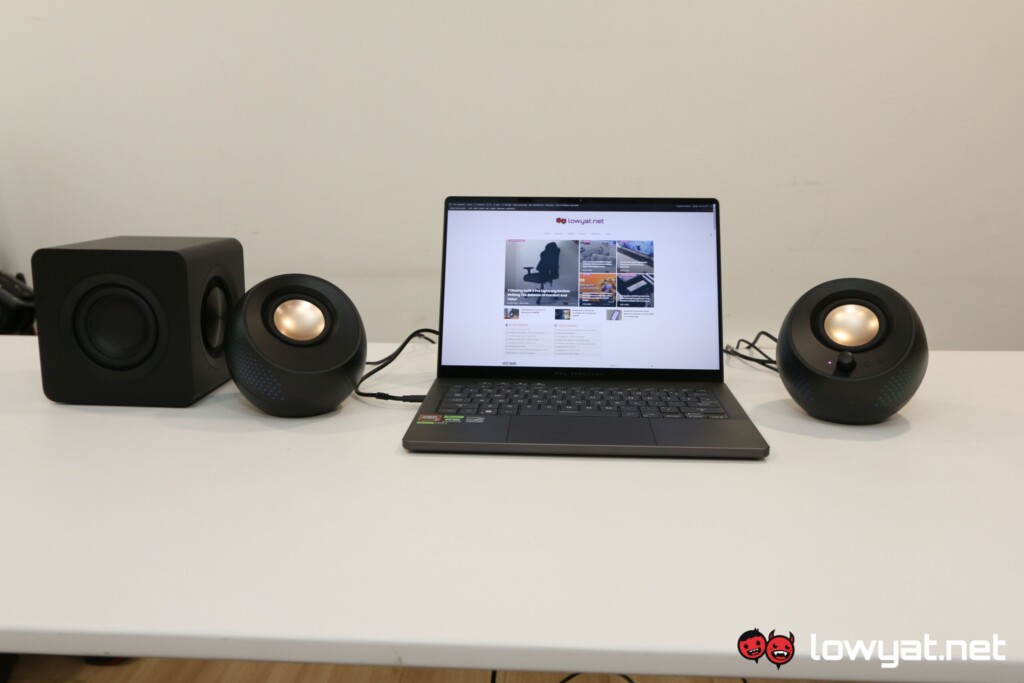Back in December last year, we reviewed the Creative Pebble V3, a cheap and affordable pair of desktop tweeters that we found to be surprising serviceable and pleasant to the ears. In this review, we’ll be taking a look at the more “premium” Creative Pebble X Plus, which comes with a full ensemble of speakers and a small subwoofer.
What Am I Looking At?
The Pebble X Plus is 2.1 speaker system, comprising two tweeters and a subwoofer. The speakers are relatively large at 5.48-inches, while the subwoofer is a little bigger at 6.24-inches and is more symmetrically designed.
The speakers, while plasticky in their look, also have RGB LEDs built into their sides, although you should know that the lighting options are limited. Moving on, the two speakers are connected with an embedded wire that cannot be removed, while the subwoofer of the Pebble X Plus is detachable.
For connectivity, the Pebble X Plus supports Bluetooth, so you can connect your mobile devices to it. On a physical level, these speakers comes with a whole bunch of USB-C cables. For that matter, the right speaker features two USB-C ports, one of which is for PD Charging, a 3.5mm auxiliary port, and separate input ports for headphones and microphones.
On the front, there is a volume knob, a dedicated Bluetooth button, and a button dedicated to changing the RGB LEDs’ flashing nature.
What’s Good About It?
The volume ceiling on the Pebble X Plus is high as well, meaning that I can pump it up to levels that are legitimately loud and near chest-thumping levels. In addition, I do not detect any breaking in the tweeters with the volume way up. For that matter, highs and mids are clear, but not crispy clear – at the very least, I can still make out each note in the instruments. Vocals are also clear and sharp, and if you listen to X Japan’s Forever Love, I can hear the reverb of Toshi’s voice every time he belts or holds a note at his industry-renowned octave.
Lows from the Pebble X Plus’ sub-woofer aren’t as floor-rattling as I would like them to be but that being said, they are strong enough that they register with each bass note in songs like Nina Simone’s Feeling Good, Hozier’s Shrike, and the entirety of Austin Wintory’s score of Journey.
Overall, in terms of sound staging, both the highs and mids are, unsurprisingly, the stars here, while the lows cover the middle and the rear of the stage, giving just enough oomph to let you hear each elements in a track.
What’s The Catch?
It also has a rather high volume threshold. Note, I say threshold and not ceiling; the Pebble X Plus still sounds meek and mousy at anything below the 70% mark, which I’m guessing it’s a good thing for some folks. But let’s be real for a second here: if you’re investing in a pair of speakers, you’re certainly going to want to blast them when the mood arises.
Moving on, for something as compact-looking and space-saving as the Pebble X Plus, it certainly comes with a heck of a lot of cables – not only is there a cable that serves as the power source but also a separate USB-C cable for the PD Out port. Not only that, but the primary cable that tethers the two speakers is shorter than average, and that’s a disadvantage to people who like spacing them out the length of their table.
Bluetooth functionality is also limited on the Pebble X Plus. Connecting it to my mobile devices is done through the dedicated button on the right speaker but once connected, that’s pretty much it. You can play the songs or media content you wish via your streaming services as you choose, but beyond that, there’s no extra control given to the connectivity option, not even ones that would allow you to control the RGB LEDs on the sides of each speaker.
Another caveat with the Pebble X Plus is how it gets its power source: it’s powered by and physically gains its media source via USB-C. In other words, if you unplug the USB-C cable from, say, your laptop or desktop PC, that’s it for power. The good news is that this means you can just power the speakers via a GAN adapter but that means you’ll have to depend on the 3.5mm auxiliary port.
Should I Buy It?
Again, it’s strange that Creative isn’t putting an official SRP on the Pebble X Plus, instead choosing to just list the average price of these speakers after conversion. At an average of RM600 for the speakers, there’s actually a fair bit I think the brand could have provided, chief among them being its own power adapter, instead of making it dependent on the USB-C ports of laptops and desktop PCs.
I also wish that Creative had included a little more in terms of controls, functions, and features with the Bluetooth connectivity option but hey, at RM600 a pop, these still aren’t half as bad. The speakers still provide a lot of bang for your buck, with the ability to turn your room into a full-on entertainment centre, be it for gaming or movies, or even as a source of music to fill the space with some form of ambient music when you have guests over at your house.
Photography by John Law.

